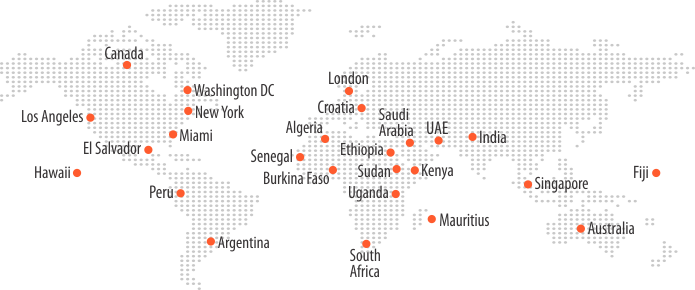Conquering Top Conferencing Service Challenges

Globalization of business, the emergence of workforce mobility, and the advancement of Cloud computing have all played key roles in transforming traditional communications, giving rise to a host of new technology advancements that have changed the way individuals connect and interact. One of these advancements set to become increasingly popular in the coming years is conferencing, which includes conference calls, web conferencing, online meetings, and video conferencing.
Along with enabling improved communication both across the street and across the globe, conferencing services save businesses considerable travel time and expenses, while positively impacting employee productivity, customer relations and partnerships, and ultimately, the bottom line. As more businesses realize these benefits, Markets and Markets estimates the enterprise collaboration market to grow to $70.61B by 2019. Each segment of the conferencing services market is also undergoing its own growth and rapid transition.
According to a new market report published by Transparency Market Research, the global video conferencing market will reach $7.85B by 2023. New research from Frost & Sullivan’s Analysis of the Global Web Conferencing Market report finds the market will reach $2.88B in 2017, growing at a Compound Annual Growth Rate (CAGR) of 9.8 percent. Ovum predicts that the global market for audio conferencing will hit $5.5B in 2015, driven predominantly by multinational corporations in emerging markets such as Asia, the Middle East and Africa, and Central and South America extending their conferencing reach into the various regions in which they operate.
Audio conferencing technology has experienced steady growth over the years, evolving from operator-assisted services to automated, reservation less and on-demand conferencing featuring unique dial-in numbers and conference IDs. Although convenient, some audio conferencing services still experience issues that can interfere with call quality for residential users as well as negatively impact business’ reputation and employees’ability to complete daily tasks if improperly designed, secured and operated.
For example, one of the most common audio conferencing problems for end-users is audio delay. Nothing is more awkward than attendees talking over each other on a conference line – except for the long silence when each of them hangs back and waits for the other to speak. Many Voice over IP (VoIP)-based audio conferencing users don’t realize that the issue is not with user etiquette, but likely audio delay that can be attributed to poor network infrastructure/ Internet connections, codec mismatch or improper configuration of the conference bridge. For telecom service providers, common challenges to offering audio conferencing services include billing and regulation, security, and differences in international network infrastructure, including unreliable or non-existent interconnections between carriers.
Recent advancements in conferencing technology have enabled softswitch technologies and integrated service delivery platforms that enable providers to virtually eliminate these issues and deliver high quality, feature-rich VoIP services to their customers. End-users also benefit, enjoying the ability to create conference calls, invite attendees, manage calls and participants with added features such as mute/un-mute and conference lock, and provide easy-to-use web interfaces for the real-time sharing of meeting minutes, presentations and documents. One example of these solutions is Bridge2Call, a Class 5 softswitch and end-to-end IP telephony service delivery platform from Panamax.
Highly secure, Bridge2Call and solutions like it feature Secure Sockets Layer (SSL) and firewalls for Denial of Service (DoS) protection. Built upon scalable and redundant architecture with fault tolerance, they ensure call reliability and voice quality, and feature carrier-grade switching that supports thousands of concurrent calls. These platforms also feature integrated billing and business process management, access number and subscriber provisioning, carrier management, and tariff and calling plan management – a one-stop-shop for the seamless management of IP telephony services.
With IP telephony service adoption such as audio conferencing on the rise, providers should seek out qualified partners with integrated platforms to help them address growing service delivery complexity. By combining order processing, service configuration, activation, authentication, provisioning and dynamic Interactive Voice Response (IVR) into a single system, these platforms enable providers to not only launch their services but also easily manage their conferencing business from one central location.






